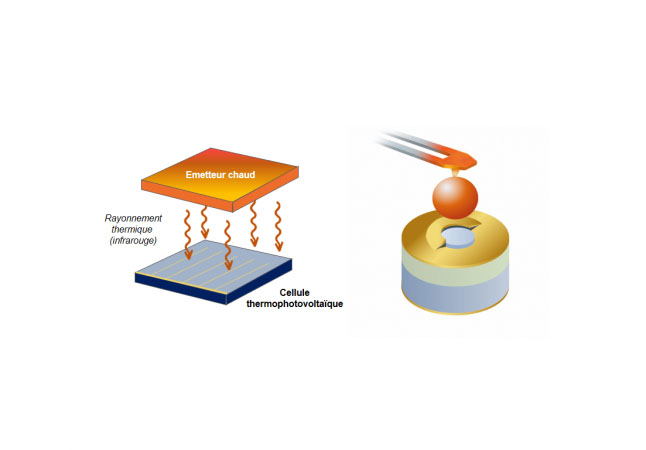# La Science s'aMuse: From thermophotovoltaic conversion to the POMM platform
Welcome to La Science s'aMuse, the scientific program co-produced by the UM and Divergence-FM, which takes you on a cruise through the archipelago of Muse laboratories. This week, Rodolphe Vaillon, a researcher at theMontpellier Institute of Electronics and Systems (IES), shares his discoveries in the field of thermophotovoltaic conversion. In the second half of the program, Pascal Etienne, from the Charles Coulomb laboratory, takes us on a tour of the Montpellier optomicrofluidic platform (POMM).

The study we're talking about today was hailed as "a milestone reached" at MIT's 2020 International Symposium on Thermal Innovations. No, we're not talking about the Cape of Good Hope, or Cape Horn, but a technological milestone enabling a 1,000-fold increase in the electrical power density obtained from thermophotovoltaic conversion, from a surface of moderate temperature (~450°C). As you can see, today's navigation takes us into the twists and turns of physics, where scientists are attempting to meet a major challenge: recovering energy from the surrounding environment to develop decarbonized energy production, without greenhouse gas emissions.
To meet this challenge, researchers at theInstitut d'électronique et des systèmes de Montpellier (IES, CNRS / Université de Montpellier) and the Centre d'énergétique et de thermique de Lyon (CETHIL, CNRS / INSA de Lyon) have demonstrated the possibility of converting thermal radiation from a surface of moderate temperature into electrical power with an efficiency of over 10%. Their secret? Bringing the emitting surface very, very close to the infrared photovoltaic cell, thus circumventing Planck's Law. Don't understand it? We explain it all to you with Rodolphe Vaillon, researcher at the Montpellier Institute of Electronics and Systems.
In the second half of the program, the En salle des machines column takes you to the POMM platform for optomicrofluidics in Montpellier. Prototyping, additive microstructuring of hybrid materials, UV or visible laser irradiation, encapsulation, Pascal Etienne, head of the hybrid and nanostructured materials team at the Charles Coulomb Laboratory, explains how to build an optomicrofluidic chip.
Read more :
CNRS Press Release: Near-Field Thermophotovoltaic Conversion with High Electrical Power Density and Cell Efficiency above 14%
C. Lucchesi, D. Cakiroglu, J.-P. Perez, T. Taliercio, E. Tournié, P.-O. Chapuis, R. Vaillon, Nano Letters, asap (2021)
Read also:
Thermophotovoltaics: PV cells to convert thermal radiation
C. Lucchesi, R. Vaillon, P.O. Chapuis, Photoniques 105, 37-40 (2020)
La science s'aMuse, you've got the map, let's go!
Production : Université de Montpellier/ Divergence FM
Animation and reporting : Lucie Lecherbonnier
Interviews : Aline Périault/Lucie Lecherbonnier
Production : Bruno Bertrand
Listen to the "A LUM LA SCIENCE" program on Divergence FM 93.9
